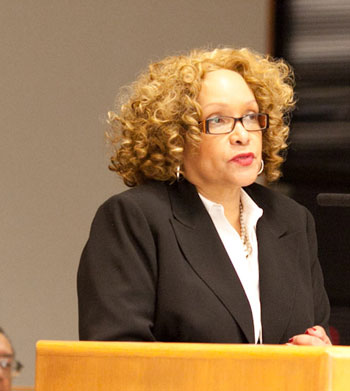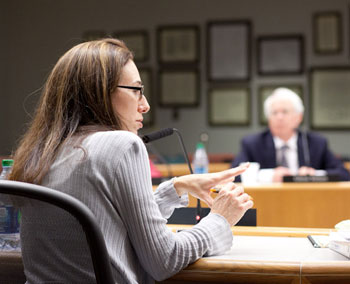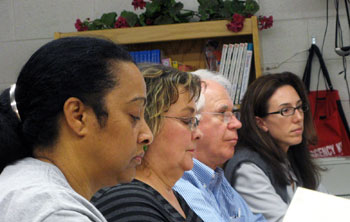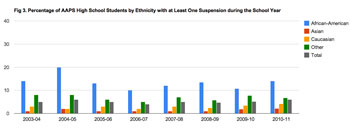AAPS Mulls Goals of Rising Scholar Program
Ann Arbor Public Schools Board of Education regular meeting (Feb. 13, 2013): A highlight of the meeting was a presentation to the board on the Rising Scholars Program.

Robyne Thompson, assistant superintendent for secondary education, gave the board a report on Rising Scholars, meant to provide support for high-achieving but underserved students. (Photos by the writer.)
The program is meant to provide support for high-achieving but underserved students. It’s a part of the district’s strategy for addressing the achievement gap between different ethnic groups. The presentation prompted some discussion about the overall goals of the program and the inequitable resources across the three comprehensive high schools. Several trustees expressed their frustration that not much had changed in the past two years.
The board was also presented with three purchase requests – two requests for purchases for new iMacs and new MacBooks for a total of $2,431,700. The computers would be paid for out of the technology bond. If the board approves the purchases, there are additional costs associated with the new computers. New software would also need to be purchased, and the cost of which would come out of the general fund. The third purchase request was for a new artificial turf field at Skyline for a cost of $858,056. The turf would be paid for out of the sinking fund.
Thirteen students, parents, and staff were present during public commentary to speak in favor of maintaining the trimester system at Skyline High School. This came in response to a request trustee made by Christine Stead at a recent meeting to hear from the members of the school community who favored trimesters. The board has in the past heard complaints about the trimester approach and calls for Skyline to adopt semesters, which is the scheduling approach used by Ann Arbor’s other two comprehensive high schools.
Also at this meeting, state representative Adam Zemke was on hand to talk about the impact Governor Snyder’s proposed budget would have on the district. He also heard the concerns of the board regarding changes in legislation. [Full Story]








